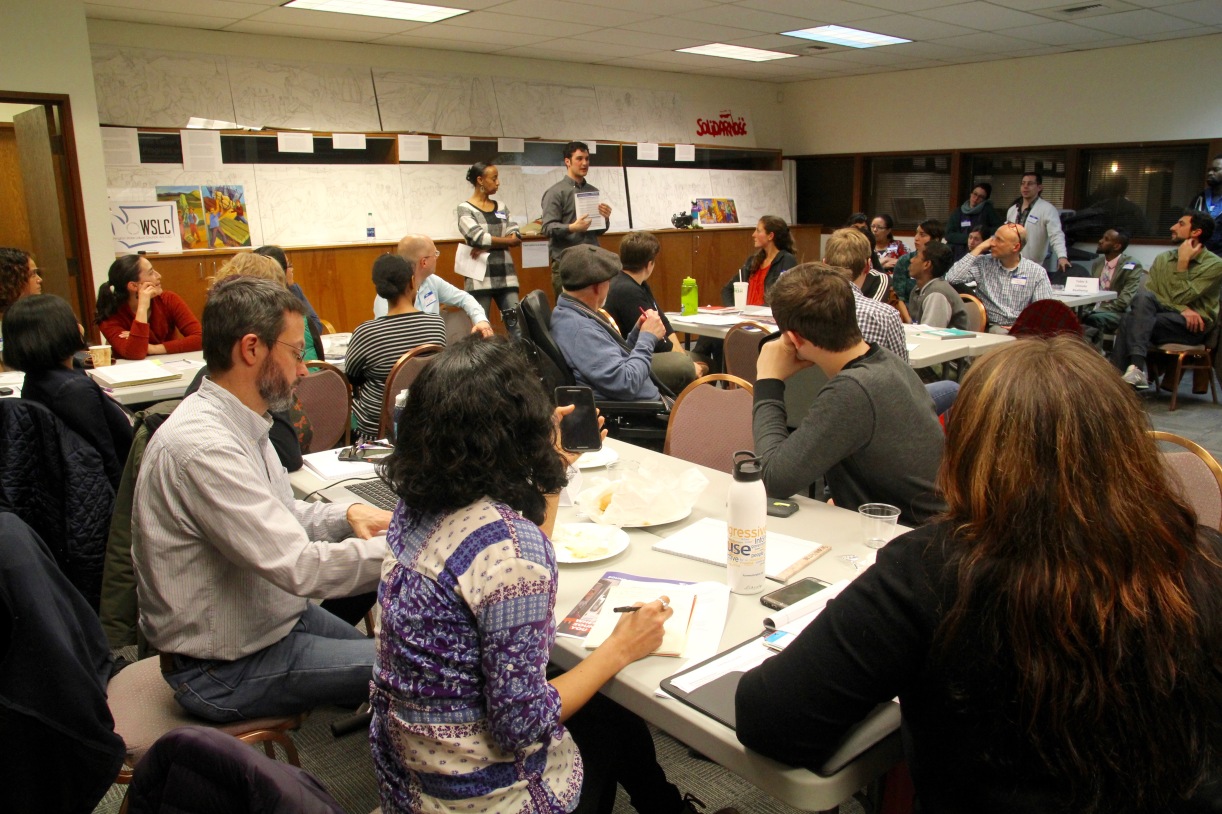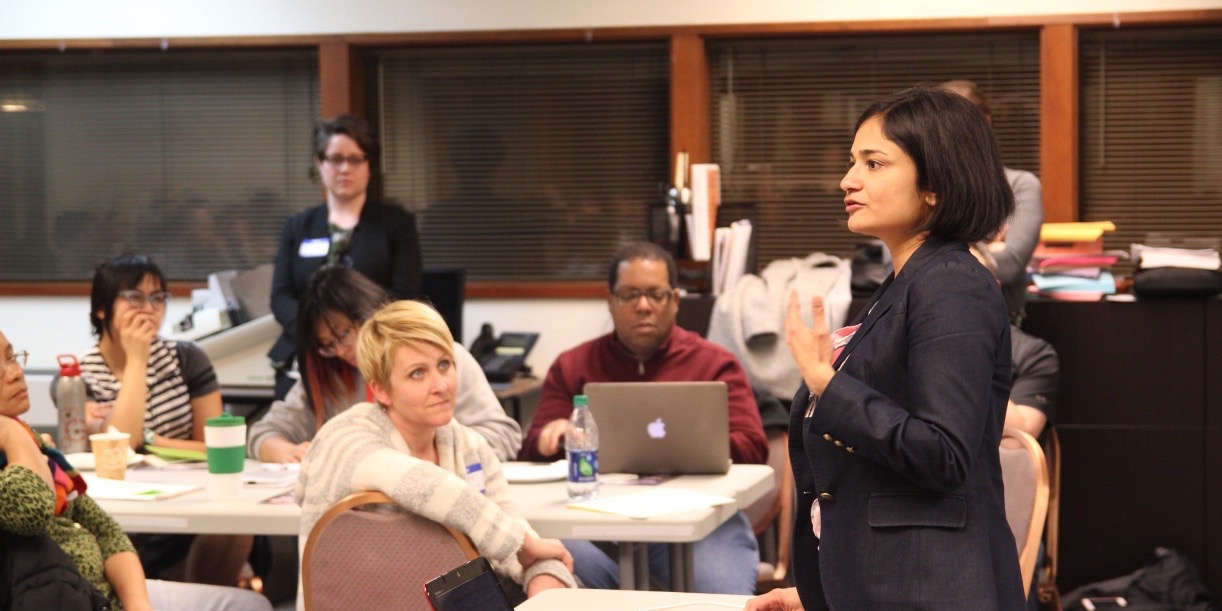By Afrin Sopariwala
The Puget Sound region has seen unprecedented growth of population in the last few years and this trend is expected to continue. By the year 2040, the population is projected to grow by roughly one million people, with a majority of the growth occurring in cities like Everett and Tacoma.
As we continue to grow as a region, we must plan to grow equitably. It’s critical that we are able to match population growth with infrastructure growth by investing in accessible public transit, affordable housing, and good jobs. With that in mind, the majority of the Puget Sound Region will have an opportunity to vote on Sound Transit 3 (ST3): a potential ballot measure that will expand and build out Sound Transit’s long range plan. ST3 will go before voters in November 2016. Sound Transit currently serves the urbanized parts of King, Snohomish and Pierce County and approximately 2.9 million people or 80.3% of the three counties.
In December 2015, Sound Transit released the list of candidate projects, which extend from Lynnwood to Everett; Bellevue to Redmond; down to Tacoma from Federal Way; and connects West Seattle and Ballard to downtown Seattle. This Thursday, the board will deliberate over the final list of projects and additional policy direction included in the ST3 package and then launch into a month of community engagement.
Community Engagement is critical to make ST3 an equitable transit system.
Puget Sound Sage, Transportation Choices Coalition, and OneAmerica – collectively Transit for All—are working with Sound Transit board members and staff to flip the script on community engagement by hosting community-driven conversations on the future of transit service and surrounding communities. Transit for All will host several workshops and forums to develop a community frame for the future of high-capacity transit in the region, to convey to Sound Transit board members and staff.
The first of many community workshops was on Feb 19th. Rebecca Saldaña, executive director at Puget Sound Sage, opened the event by inviting the community to engage in this process. She said, “If you’re not at the table, then you’re on the menu.” Shefali Ranganathan, director at Transportation Choices Coalition, walked the audience through the history of the region’s transit system.
Shefali related the ironic story of how Seattle lost the opportunity to build a regional transit system. In 1965, the federal government proposed Forward Thrust – a project to fund most of a regional train system. Unfortunately, voters did not approve the ballot measure, and the Federal Government sent the funding to build Atlanta’s system instead. We are now playing catch-up. This time, it will cost over $27 billion and will be one of the biggest and boldest investments we will see in this region in our lifetimes.
It is important that the community is engaged in choosing how we connect our region in an accessible, just and sustainable way – focusing investments in historically disinvested in communities and ensuring that low-income communities are not displaced. The first workshop generated some great ideas and input from the community. They are outlined below.
Good Jobs near Transit:
- Construction and maintenance jobs should pay living wages, and have intentional inclusion for people of color, women, LGBQT and other marginalized communities.
- After construction, ensure good jobs that are long term and relevant to the community are available and accessible to people most impacted
- While disposing the land, ST should require that developers provide good jobs to people that are from those communities.
Affordable Housing:
- It is important that people can work and live near transit — to save a lot of time and cost. Sound Transit should prioritize affordable housing and living-wage jobs near transit.
- Sound Transit and local governments must play a role in preventing and mitigating economic displacement that happens near transit for both residents and community institutions.
- It is important to provide adequate benefit for households that will be physically displaced, there should be fair relocation opportunities offered to them in affordable housing without pushing them further out of the urban areas.
- Surplus land disposition must allow affordable housing that recognizes the needs of the community that already exists to minimize gentrification.
Climate Resilience:
- Resilience is both being prepared to face disasters and making our communities and social relationships stronger.
- Transit centers must be designed keeping in mind climate change impacts like increased temperatures and frequent storms, especially to elders and disabled people. Invest in low-impact developments – rain gardens, tree cover, permeable pavements, etc.
- Existing infrastructure should be retrofitted to be accessible and prepared for climate change impacts.
- Different modes of transit must be in proximity each other and to community centers, educational centers, faith-places.
Community Engagement:
- Set up community boards in each area of proposed construction with people that represent the community. Diverse segments of people must be invited to this board — not only business owners but also students, disabled, low-income people. Representation from ST should not just be engagement managers, but designers and engineers to collaborate on solutions.
- Employ community liaisons from the community, and use easy-to-understand and interactive ways to engage the community in technical details.
- Publish information in ethnic media outlets that the communities engage in more than just the mainstream media. Meeting should be set to be accessible in different languages and at times that working people can attend.
- Design simple ways for people to understand the cost impact — cost to use transit, or how it might affect the rent of their homes.
- Resource community stakeholders to conduct community engagement and organizing.
Accessibility & Safety:
- We need sidewalks and good lighting not just at the station but 1/4- 1/2 mile from the station.
- Stations should have activity near them like retail or commercial so that there are lots of people around. This creates a sense of safety.
- Better bus access to the stations.
- Bike lanes and lockers at the stations.
- Better amenities at bus stops near stations (lighting, shelter, seating).
- Make sure that communities are part of the design process so that they welcome the station and do not oppose it.
- Good signage to and from the station in multiple languages where it makes sense.
- Stations should feel walkable and human scale – not like the Mt.Baker station.
- More security at stations.

Ramping up to the next phase:
The Transit for All coalition will advocate for these priorities to Sound Transit board members and urge them to take this community vision for an equitable Sound Transit 3 into account as they make their final decisions over the coming months.
This is just the beginning and it is important that the community deepens conversations and brings more voices to the process of decision making in the next few months. It is critical that we get active in discussions around the impacts and long-term goals that we envision for transit in our region. We will organize phone banking, door knocking and invite people to show up at board meetings and public hearing.
Please sign up to learn more and attend the next People’s Workshop on April 13th at Highline College.

